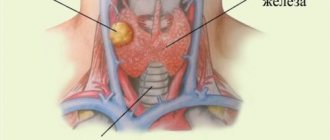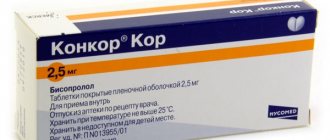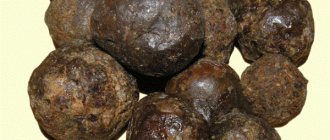Drug interactions
Since the combination of Amzaar with other antihypertensive drugs may enhance the hypotensive effect, such a prescription should be justified.
Possible reactions between amlodipine and other drugs/substances:
- neuroleptics, alpha1-blockers, angiotensin-converting enzyme (ACE) inhibitors, nitrates, thiazide and loop diuretics: the hypotensive effect is enhanced;
- CYP3A4 inhibitors (erythromycin, diltiazem, ritonavir, itraconazole, ketoconazole): plasma concentrations of amlodipine increase (symptoms of peripheral edema and hypotension should be monitored);
- inducers of CYP3A4 (rifampicin, St. John's wort): information on the effect on the pharmacokinetic parameters of amlodipine is not available (continuous monitoring of blood pressure is recommended);
- beta-blockers: possible worsening of heart failure;
- calcium supplements: the effect of amlodipine is reduced;
- antiarrhythmic drugs that cause prolongation of the QT interval (quinidine, amiodarone): the negative inotropic effect may increase;
- dantrolene (intravenous administration): hyperkalemia, arrhythmias, collapse, decreased strength of heart contractions may occur;
- lithium preparations: manifestations of neurotoxicity are aggravated (ataxia, vomiting, nausea, diarrhea, tinnitus);
- Digoxin: no effect on its concentration and renal clearance is observed;
- cimetidine, magnesium- or aluminum-containing antacids (single dose), grapefruit juice: no significant effect on the pharmacokinetics of amlodipine;
- phenytoin, indomethacin, warfarin, digoxin: there is no effect on the binding of these drugs to plasma proteins.
Possible interactions between losartan and other drugs/substances:
potassium-sparing diuretics (amiloride, triamterene, spironolactone), potassium-containing salt substitutes, potassium supplements: possible increase in serum potassium levels; non-steroidal anti-inflammatory drugs (NSAIDs), including selective cyclooxygenase-2 (COX-2) inhibitors: the hypotensive effect of losartan is reduced; in the presence of impaired renal function, their further deterioration (usually reversible) may occur, up to the appearance of acute renal failure (caution should be exercised); medications that affect the RAAS: arterial hypotension, hyperkalemia, fainting (syncope) and renal functional disorders may occur (continuous monitoring of renal activity, concentration of electrolytes in the blood and blood pressure is required); warfarin, digoxin, hydrochlorothiazide, phenobarbital, cimetidine: no significant pharmacokinetic interaction was observed; rifampin: decreased concentrations of losartan; fluconazole (CYP2C9 isoenzyme inhibitor): the concentration of losartan in the blood plasma increases.
Amzaar should not be used concomitantly with aliskiren or aliskiren-containing drugs in patients with diabetes mellitus and/or renal impairment (glomerular filtration rate below 60 ml/min/1.73 m²).
When and how to use
Treatment with Lozap is prescribed if the patient cannot tolerate therapy with ACE inhibitor drugs. This remedy is also suitable for reducing the risk of heart attacks or strokes in people with heart failure, as well as those with left ventricular hypertrophy. Lozap has proven itself well in the treatment of such diseases:
- vascular hypertension;
- heart failure;
- diabetic nephropathy and proteinuria in patients with type 2 diabetes mellitus.
A cardiologist explains how to take Lozap. When treating hypertension, the patient is first prescribed the minimum daily dosage once, regardless of food intake. For elderly patients, this portion is reduced by another half. If a positive effect does not occur after taking the medicine, then gradually increase the daily dosage. In cases where the patient has renal dysfunction, a low dosage is initially indicated.
Further treatment involves the use of Lozap plus, which has a diuretic effect, and a gradual increase in dosage under the control of blood pressure.
Patients with stage 2 diabetes mellitus and proteinuria are prescribed a minimum dose of the drug, slowly doubling it. For control, it is necessary to regularly measure blood pressure. Lozap is used in the treatment of hypertension in combination with other drugs that reduce blood pressure.
In case of overdose, the patient exhibits symptoms of hypotension:
- dizziness;
- decrease in blood pressure below normal;
- heart rhythm disturbance;
- bradycardia.
In severe cases, fainting and collapse occur.
pharmachologic effect
Amzaar is a combination of 2 active components with complementary hypotensive effects: amlodipine (belongs to the class of CCBs, dihydropyridine derivatives) and losartan (belongs to the class of angiotensin II receptor antagonists-ARB). The active components of the drug have a different mechanism of hypotensive action: amlodipine - due to vasodilation, reduces peripheral vascular resistance, losartan - due to its effect on the RAAS (inhibits the effects of angiotensin II), which leads to a more pronounced decrease in blood pressure compared to that during monotherapy with each drug. Amlodipine A dihydropyridine derivative, which is an optically inactive mixture of optically active isomers. Amlodipine blocks calcium channels, thereby inhibiting the transmembrane transition of calcium into myocardial cells and vascular smooth muscle cells. Reduces blood pressure through a direct relaxing effect on the smooth muscles of arterial vessels. In preclinical studies, amlodipine had a more pronounced effect on smooth muscle cells compared to cardiomyocytes. Amlodipine has no negative effect on either AV conduction or myocardial contractility. The drug reduces vascular resistance of the kidneys and increases renal blood flow. Studies of amlodipine in patients with chronic heart failure (CHF) of functional classes II–IV according to the NYHA classification (New York Heart Association classification) showed that amlodipine does not have a negative effect on exercise capacity, ejection fraction or any clinical parameters, as well as metabolism, in particular on the concentrations of lipids and glucose in the blood plasma. With a single oral dose, the effect of amlodipine begins within 2–4 hours and lasts for 24 hours. The maximum hypotensive effect is achieved no earlier than 4 weeks from the start of taking the drug. Amlodipine reduces blood pressure in patients in a lying or sitting position, as well as during physical activity. Since the pharmacodynamic effect of the drug develops gradually, amlodipine does not cause a sharp decrease in blood pressure or reflex tachycardia. Amlodipine reduces the severity of left ventricular hypertrophy. The hemodynamic effects of the drug remain unchanged with long-term use. Amlodipine camsylate is chemically similar to amlodipine besylate, which is more common in clinical practice, but has better photostability compared to it. According to preclinical studies, both camsylate and besylate have the same pharmacodynamics and pharmacokinetics. Toxicological studies of amlodipine camsylate in animals revealed no additional toxic effects or genotoxic potential relative to amlodipine besylate. The pharmacodynamic effects of amlodipine camsylate and amlodipine besylate were comparable when administered as a single dose of 5 mg to healthy male volunteers. In particular, both amlodipine salts had comparable effects on SBP and DBP, as well as an increase in heart rate, with the maximum development of the hypotensive effect in the interval 6.7–11.9 hours after administration and the maximum increase in heart rate within 19 hours after administration. Decrease in SBP and DBP by approximately 13 and 15 mmHg. Art. accordingly, it was observed in both cases, with a return of blood pressure to initial values 24 hours after administration, which corresponds to the known pharmacokinetic and hemodynamic profile of amlodipine besylate. Losartan Losartan is a synthetic angiotensin II receptor antagonist (AT1 type) for oral administration. Angiotensin II, a potent vasoconstrictor, is the main hormone of the RAAS and an important determinant of the pathophysiology of hypertension. Angiotensin II binds to AT1 receptors found in many tissues of the body (vascular smooth muscle, adrenal glands, kidneys and heart) and mediates important effects such as vasoconstriction and aldosterone release. Angiotensin II also stimulates the proliferation of vascular smooth muscle cells. Losartan selectively blocks AT1 receptors. Both in vitro and in vivo, losartan and its pharmacologically active carboxylated metabolite, E-3174, block all physiologically related actions of angiotensin II, regardless of the source or route of its synthesis in the body.
The drug Lozap and Lozap Plus: analogues, price and reviews
A fairly frequently asked question: “Which is better - Lozap or Lorista?” In fact, these drugs have the same active ingredient - losartan potassium. Lorista is prescribed in the same way as Lozap for people suffering from such ailments as chronic heart failure and arterial hypertension. The properties and effects of the drugs are almost identical.
The main difference is the lower price of Lorista, which is the main advantage of this drug. The average cost of Lozap No. 30 is 300 rubles, in Lorista - 150 rubles. You can take a cheaper analogue only with the permission of a doctor.
What are the differences between Lozapa and Lozapa Plus?
If you need to undergo a course of therapy with this drug, the question arises which is better: Lozap or Lozap Plus.
The main difference is that the second drug is a combination drug - the active ingredients are losartan potassium and hydrochlorothiazide, which is a diuretic and has a diuretic effect.
Both drugs are angiotensin receptor blockers. They help prevent narrowing of the arteries. The concentration of losartan in them is the same, but the drug Lozap Plus differs from Lozap in being more effective, since it contains two active components that complement each other.
Another difference between the drug Lozap Plus and Lozap is that the former is produced in a single dosage - 50 mg of losartan + 12.5 hydrochlorothiazide.
There are a considerable number of analogues of this drug. The most common include: Nortivan, Irsar, Giposart, Valz, Atakand, Naviten, Aprovel, Diovan, Kandecor, Micardis, Valsartan.
In addition, there are also synonyms for the drug in question - they contain identical active ingredients: Brozaar, Vasotens, Losartan, Losacar, Lotor, Renicard, Lorista.
Your doctor may also prescribe medications based on the substance guanfacine.
The average cost of Lozap 12.5 No. 30 is 200 rubles; 12.5 No. 90 - 550 rubles; 50 mg No. 30 - 270 rubles; 50 mg No. 60 - 470 rubles; 50 mg No. 90 - 670 rubles; 100 mg No. 30 - 320 rubles, 100 mg No. 60 - 560 rubles; 100 mg No. 90 - 750 rubles.
The average price of Lozap plus 12.5 mg No. 30 is 350 rubles, No. 90 is 800 rubles.
Instructions for use 5 50, 5 100 mg
Before starting treatment with Amzaar tablets, carefully read the instructions for use. Under no circumstances should you experiment with dosages as you please. All factors should be taken into account, because inexperience can have the opposite effect.
How to use?
The medicine Amzaar is taken directly orally once a day with water. This is done regardless of food intake.
Dosage
It is best to start treatment after preliminary selection of the required dosages of amplodipine and losartan. The general condition of the patient often changes, in which case it is necessary to change the dose of one of the active elements in the combination drug. The doctor selects doses of different components individually for each patient.
People who take amlodipine and losartan together are switched to a combination medicine containing both substances in similar doses.
Patients are recommended to take one tablet per day, as described above. The minimum initial dosage, according to the instructions for use, is Amzaar 5/50 mg. If such a dosage does not produce the desired effect, then the doctor may prescribe Amzaar 5/100. Sometimes, to achieve certain blood pressure levels, it is necessary to increase the dosage.
special instructions
During treatment, patients with reduced circulating blood volume may encounter problems such as the development of arterial hypotension.
In older people, there is no need to adjust the dose of Amzaar, but it should be increased carefully. Children and adolescents under eighteen years of age should avoid using Amzaar, since it is unknown how it will affect a fragile body
Children and adolescents under eighteen years of age should avoid using Amzaar, since it is unknown how it will affect a fragile body.
Pregnant and lactating women should refrain from using Amzaar 5/50, as described in the instructions.
Drivers taking Amzaar 5/100 (instructions for use should be reviewed carefully) should be especially careful when driving a car or other vehicle: they may suddenly become dizzy. Regardless of the dosage of the drug, there are certain risks
If there is an individual intolerance to certain components of Amzaar, then treatment should be abandoned. This also applies to the occurrence of an unexpected state of shock in a person. People suffering from diabetes can be safely treated with Korean Amzaar tablets, following the instructions for use.
special instructions
Before starting a course of therapy with Amzaar, patients must eliminate the deficit of blood volume, the presence of which can lead to symptomatic arterial hypotension.
It is not recommended to take the drug at the prescribed daily dose of losartan of 25 mg.
After discontinuation of amlodipine (due to its long half-life), it is necessary to begin treatment with another vasodilator with extreme caution. In this case, the dosing interval and dose should be individually selected, and the patient's condition should be carefully monitored.
During treatment with amlodipine, you need to monitor your body weight and salt intake, and strictly adhere to the appropriate diet. To prevent bleeding, hyperplasia and sore gums, it is recommended to regularly visit the dentist and maintain dental hygiene.
In view of the possible threat of developing hyperkalemia, extreme caution should be taken in combining the use of losartan with potassium-sparing diuretics (spironolactone, triamterene, amiloride, etc.), potassium-containing salt substitutes, heparin, potassium preparations and other drugs that lead to an increase in the level of potassium in the blood plasma. If such combinations are necessary, monitoring of plasma potassium concentration is required, especially in elderly people with impaired renal function
The use of losartan can cause the development of arterial hypotension, accompanied by shortness of breath, fainting, and shock.
As a result of suppression of the renin-angiotensin-aldosterone system (RAAS), changes in renal function have been reported in some patients taking losartan, which resolve when the drug is discontinued.
According to clinical studies in patients with unilateral or bilateral renal artery stenosis, when taking losartan, an increase in plasma levels of urea nitrogen and creatinine is possible, which is reversible after discontinuation of drug therapy.
During treatment, due to the possible risk of dizziness, extreme caution is required when driving vehicles and other complex mechanisms.
Contraindications
Lozap Plus is not recommended for use in the following cases:
- If the patient is under 18 years of age (effectiveness has not been clinically established);
- In case of hypersensitivity to any components of the drug;
- For hyperuricemia, gout;
- For persistent hyponatremia that does not respond to therapy for hypokalemia or hypercalcemia;
- In case of severe impairment of liver function and bile outflow;
- With anuria;
- With severe arterial hypotension;
- In case of severe impairment of renal and liver function (creatinine clearance more than 30 ml/s);
- With hypovolemia, including against the background of excessive doses of diuretics.
Caution must be exercised in the following situations:
- If there is renal failure;
- With stenosis of the renal arteries;
- During electrolyte-water imbalance;
- With reduced blood volume.
However, it is known that all drugs that affect the renin-angiotensin system in the second or third trimester of pregnancy can cause defects in the development of the fetus and even provoke its death. Therefore, taking Lozap Plus should be stopped immediately upon pregnancy. You should also avoid it when breastfeeding.
How to take hypertension pills
The medicine is taken once a day. Food doesn't matter. Drink with water. The doctor selects the dosage and duration of treatment separately in each case. Patients who took losartan and amlodipine separately can switch to Amzaar, maintaining the same dosage of active substances.
When prescribing the dose, the following points must be considered:
- The drug can be used for renal failure if creatinine clearance is from 50 to 20 ml/min. In this case, the dosage does not need to be adjusted. If the patient is on hemodialysis or the clearance is below 20 ml/min, the medicine is not recommended, since the doses of the active substances must be adjusted individually.
- The instructions do not recommend the medicine for patients with low blood volume (circulating blood volume). In this case, the tablets can be taken while replenishing the blood volume (for example, through a blood transfusion). The dosage of losartan should not exceed 25 mg.
- Patients with liver failure can use Amzaar. The daily dose of losartan is 50 mg.
- Patients over 65 years of age can take the drug. The dose of losartan is 50 mg.
Use with other drugs
Before treatment, you must inform your doctor about taking all medications. Their interaction with Amzaar may provoke unwanted reactions and complications. The instructions recommend considering the following points:
- Simultaneous use with other drugs for high blood pressure enhances the hypotensive effect of Amzaar.
- Erythromycin, Diltiazem, Itraconazole, Ritonavir and other CYP3A4 inhibitors increase the concentration of amlodipine in the blood.
- When taken simultaneously with St. John's wort, Rifampicin and other CYP3A4 inducers, unpredictable pressure surges are possible. For this reason, blood pressure must be constantly monitored.
- Combination with lithium drugs can cause nausea, tinnitus, tremor, diarrhea, and ataxia.
- The simultaneous use of amlodipine with beta-blockers may provoke an exacerbation of heart failure.
- Combination with Quinidine, Amiodarone and other slow calcium channel blockers enhances the reduction in heart rate.
- Neuroleptics and isoflurane enhance the effect of amlodipine.
- Intravenous administration of Dotrolene during the use of Amzaar can provoke arrhythmia, collapse, decreased strength of heart contractions, and hyperkalemia.
- Calcium supplements can reduce the effect of amlodipine.
Nonsteroidal anti-inflammatory drugs reduce the effect of losartan. The combination of the drug with ACE inhibitors and angiotensin receptor antagonists can cause complications on the kidneys, so it is necessary to constantly monitor their condition. Fluconazole, an inhibitor of the CYP2C9 isoenzyme, increases the level of losartan in the blood, while Rifampin decreases it.
Composition and action
The main active ingredients are:
- Hydrochlorothiazide is a thiazide diuretic. Reduces sodium reabsorption. Promotes the excretion of bicarbonate, potassium and phosphates from the body in the urine. Reduces blood pressure by changing the reactivity of the walls of blood vessels, reducing the volume of circulating blood and enhancing the depressant effect.
- The specific receptor antagonist is losartan. Does not inhibit the enzyme kinase-2. Reduces peripheral vascular resistance, reduces afterload, the concentration of aldosterone and adrenaline. Prevents myocardial hypertrophy. Helps increase the tolerance of patients with heart failure to physical activity.
Biological processes in the body caused by these components:
- Hydrochlorothiazide dissolves in the stomach and enters the blood, but is not metabolized by the liver. Slows down the excretion of potassium ions from the body. The result of treatment is the removal of bicarbonate ions, magnesium, potassium, which are excreted unchanged from the body in the urine within 6-14 hours.
- Losartan is absorbed into the blood from the intestinal tract. Metabolized in the liver, forming an active metabolite. Binds to blood plasma protein. The maximum concentration of losartan in the blood occurs 1 hour after oral administration of the drug Lozap Plus. The metabolite period occurs within 3-4 hours. It is excreted from the body after 2 hours: with urine - 34% of the dose taken, from the intestines - 66%.
Auxiliary components of Lozap Plus:
- Methylated alcohol;
- Microcrystalline cellulose;
- Croscarmellose sodium;
- Mannitol;
- Povidone;
- Hypromellose;
- Macrogol 6000;
- Magnesium stearate;
- Dyes.
The drug begins to act two hours after oral administration. The maximum diuretic effect occurs after 4 hours. Thanks to the effects of hydrochlorothiazide, blood pressure decreases, the volume of circulating blood decreases, and the depressant effect on the nerve nodes improves . The hypotensive effect of the drug reaches a maximum after 6 hours, after which it gradually decreases during the day.
The action of the components is also aimed at blocking angiotensin-2 receptors in different parts of the body, eventually they stop working.
Losartan reduces arterial vasoconstriction, resulting in a decrease in pressure in the pulmonary circulation.
The action of the components is also aimed at retaining sodium and water in the body and preventing the synthesis of aldosterone. Patients with heart failure noticeably feel resistant to physical activity.
Lozap Plus reduces the risk of heart disease and deaths from arterial hypertension.
Possible side effects
The use of Amzaar can provoke various side effects from the nervous, digestive, cardiovascular and other systems. The reviews indicate more specific ones.
| Damage area | Frequent complications | Rare effects | Rare complications |
| Nervous system |
|
|
|
| Digestive system |
|
|
|
| The cardiovascular system |
| ||
| Hematopoietic and lymphatic systems |
| ||
| urinary system |
|
| |
| Reproductive system |
| ||
| Respiratory system |
| ||
| Musculoskeletal system |
| ||
| Skin and its appendages |
|
| |
| Sense organs |
| ||
| Metabolism |
Release form and composition
Amzaar is produced in the form of film-coated tablets: biconvex, oblong, dose 5/50 mg - almost white or white, with “AT1” engraved on one side; dose 5/100 mg – pale pink or pink, on one side with engraving “AT2” (10 pieces in a blister, 1 or 3 blisters in a cardboard box; 300 pieces in a polyethylene bottle, 1 bottle in a cardboard box pack).
Composition of 1 tablet:
- active ingredients: amlodipine camsylate – 7.84 mg (equivalent to the content of 5 mg of amlodipine), losartan potassium – 50 or 100 mg;
- additional components: sodium carboxymethyl starch, magnesium stearate, microcrystalline cellulose, povidone K30, butylated hydroxytoluene, mannitol, crospovidone;
- film shell: titanium dioxide, hyprolose, talc, hypromellose 2910, additionally for a dose of 5/100 mg - iron dyes red oxide and yellow oxide.
Which is better Amzaar or Lortenza
Any drug has its pros and cons, but if we think from the point of view of a simple buyer, the following observations arise. The main elements that make up Lortenza are similar to the Korean medicine. In addition, the indications for use for both drugs are the same. Instructions for use may vary.
There are just a few reviews about Lortense. Most likely this is due to the fact that the product is not as widespread as its Korean counterpart. Buyers say that Lortenza keeps blood pressure normal. But basically, a lot depends on the individual’s tolerance to the drug.
Amzaar (instructions included) is more expensive than Lortenza. But is it really worth saving on your health? The main thing is the result that we get for our money. Moreover, the product has proven itself well both in the pharmaceutical market and among buyers. And you need to trust only well-tested products. So, which is better - Amzaar or Lortenza? The answer to this question is quite obvious - Amzaar.
How to replace Lozap with high blood pressure
On the pharmaceutical market, analogues of Lozap tablets for blood pressure are presented in a wide range. Experts note that the price of a substitute does not determine its quality. Cheap analogues can be no less effective than the original. It is important to carefully study the composition and instructions for use of the drug before purchasing it and starting the therapeutic course!
Lozap Plus
The latest generation analogue of Lozap is the drug Lozap Plus, which includes not only losartan, but also hydrochlorothiazide. This substance activates the main ingredient, perfectly complements and enhances it, and also helps to increase the duration of action of the tablets.
The dosage regimen is completely identical to the rules for using the drug Lozap, as well as the clinical indications. Possible side effects include allergic reactions.
The cost of Lozap Plus tablets is about 900-1000 rubles.
Lozap Plus tablets are supplemented with another active substance
Amlodipine
The drug Amlodipine is a substitute for Lozapa, which has earned numerous positive reviews from patients and medical specialists. The main active ingredient is amlodipine.
Tablets are prescribed for pain localized in the chest area and elevated blood pressure.
In addition to the contraindications inherent in Lozap, the substitute Amlodipine is not recommended for use in patients suffering from hypotension (low blood pressure), aortic stenosis, left ventricular failure, or collapse. Unlike Lozap, Amlodipine affects the central nervous system and the speed of reactions.
Used in a daily dose of 5 mg. To increase the effectiveness of the therapeutic course, it is recommended to combine taking pills with a salt-free diet.
If the drug is abruptly discontinued, there is a risk of developing angina. The estimated cost of Amlodipine tablets (30 pieces) is about 100 rubles.
Concor
A modern substitute for the high blood pressure drug Lozap is Concor, the main active ingredient of which is bisoprolol.
The tablets have a wider range of indications and are successfully used to treat not only high blood pressure, but also coronary artery disease and a chronic form of heart failure.
However, Concor has more contraindications. It is not recommended to use this substitute for the treatment of patients with psoriasis, respiratory tract pathologies, or weakened sinus nodes.
Tablets are taken 5 mg or 10 mg 1 time per day. If taking Lozap is in no way connected with your meal schedule, then Concor is recommended to be taken in the morning during breakfast.
The price of the analogue is about 220 rubles or more, depending on the dosage and number of tablets in the package.
Concor is an analogue of Lozap in terms of therapeutic action
Lorista
A complete analogue of the drug Lozap, which has an identical active substance, is the drug Lorista. In addition to the ability to lower blood pressure, the substitute is also characterized by the presence of moderate diuretic properties.
The average cost of the drug (30 tablets) is about 200 rubles.
Valsartan
The drug Valsartan is a domestically produced analogue of Lozap. Used to lower blood pressure and treat heart failure. Contraindications are identical to the restrictions on use characteristic of Lozap.
Take tablets once a day in a dosage ranging from 80 mg to 230 mg.
The Russian substitute Lozapa is quite affordable and affordable - from 150 rubles for 30 tablets.











